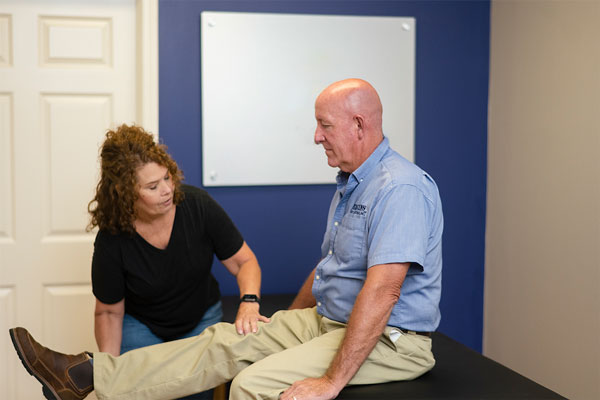One of the most valuable services we provide to employers is our rapid, on-the-job injury assessment. When an injury occurs in the workplace, time is critical — and our experienced team is ready to respond quickly and effectively.
Fast, Effective Injury Assessment

Our prompt evaluation helps determine the most appropriate course of action for both the employee and the employer. In many cases, because our injury prevention specialists understand your working environment, we can resolve the issue on-site with First Aid Treatment, which offers several important benefits:
- Faster healing for the employee
- Reduced injury-related costs for the employer
- Avoidance of unnecessary recordable or reportable injuries
- Faster return-to-work timelines
This early intervention approach helps employers minimize downtime and supports employee recovery from the start.
When Further Medical Attention Is Needed
If an injury requires care beyond First Aid, we facilitate a smooth transition to additional medical services. Our team can:
- Provide referrals to trusted healthcare providers in our professional network
- Coordinate on-site rehabilitation to improve recovery outcomes
- Communicate effectively between employer and healthcare teams, ensuring clarity and eliminating medical jargon barriers
We serve as a bridge between the workplace and the healthcare system — advocating for the best outcomes while helping employers stay informed and compliant.
Key Components of our Worksite Injury Management Program Include:
1. Injury Prevention
- Physical Demands Analysis (PDA) and Job Hazard Analysis (JHA): Identifying and addressing physical requirements and potential risks of job tasks.
- Ergonomic Assessments: Reducing strain, awkward postures, and repetitive motion injuries in office, warehouse, or production settings.
- Safety Training & Education: Ongoing instruction on hazard recognition, PPE use, and safe work practices.
- Work Conditioning & Stretching Programs: Pre-shift warmups or task specific movement routines to reduce strain.
2. Early Intervention
- On-Site Triage & First Aid: Rapid response to discomfort or minor injuries to prevent escalation.
- Access to Allied Health Professionals: Athletic Trainers, PTs, OTs, or RNs available for early care and guidance.
- Symptom Reporting Protocols: Encouraging early reporting to minimize severity and downtime.
3. Injury Assessment & Care Coordination
- Medical Referral Network: Pre-identified providers familiar with occupational health standards.
- Functional Job Descriptions: Matching medical restrictions to job demands accurately.
- Case Management: Active communication between healthcare providers, supervisors, and safety personnel.
4. Return-to-Work (RTW) Program
- Modified Duty & Transitional Work: Temporary roles that match current capabilities and responsibilities.
- Functional Testing: Fit-for-duty to ensure safe return and FCE to determine capabilities.
- Progress Monitoring: Regular check-ins to evaluate recovery and readiness for full duty.
5. Compliance & Documentation
- OSHA Recordkeeping: Timely and accurate injury and illness logs.
- ADA/FMLA Guidance: Ensuring appropriate accommodations and legal compliance.
- Workers’ Compensation Integration: Seamless coordination with insurers and third-party administrators.
6. Communication & Training
- Incident Reporting & Investigation: Standardized approach to identify root causes.
- Employee Engagement: Building a culture of safety ownership and openness.
- Supervisor Training: Empowering frontline leaders to support safe work practices.
7. Program Evaluation & Continuous Improvement
- Injury Data Analysis: Identifying trends, high-risk tasks, and opportunity areas.
- Performance Metrics: Tracking days away, restricted duty, severity rates, and cost savings.
- Feedback Loops: Regular reviews with stakeholders to refine and improve.

